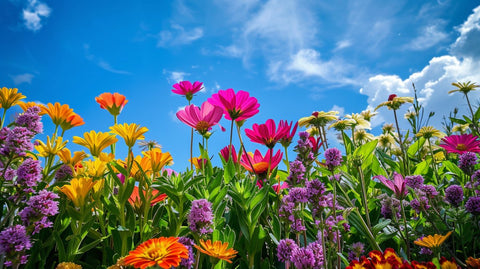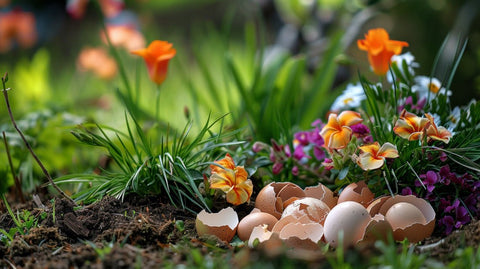Are you looking to add a burst of color and beauty to your garden? Look no further than annual plants. These versatile and vibrant plants can provide you with a stunning display of colorful blooms all season long. In this article, we will explore the lifecycle of annual plants, their importance in the garden, and provide you with tips on how to choose, plant, and maintain them.
I. Introduction
A. Explanation of Annual Plants and Their Lifecycle
Annual plants are plants that complete their lifecycle, from seed to flower to seed again, within one growing season. Unlike perennial plants that live for several years, annuals typically only last for one year. They germinate, grow, flower, produce seeds, and die in a single growing season. This lifecycle allows them to provide a burst of color and beauty to your garden year after year.
B. Importance of Annual Plants in the Garden
Annual plants play a crucial role in the garden for several reasons. Firstly, their vibrant blooms can add a pop of color and create visual interest in your flower beds, containers, or borders. Secondly, they can fill in gaps in your garden when other plants are not blooming, providing continuous color throughout the season. Lastly, annuals are an excellent choice for those who love experimenting with different plant varieties and changing their garden design every year.
II. Benefits of Annual Plants

A. Colorful Blooms All Season Long
One of the biggest advantages of annual plants is their ability to produce colorful blooms for an extended period. Unlike perennials that often have a shorter blooming period, annuals will continue to produce flowers throughout the entire growing season. This means you can enjoy a kaleidoscope of colors in your garden from spring to fall.
B. Easy to Grow and Care For
Annual plants are known for their ease of cultivation. They are generally low-maintenance and require minimal care. Most annuals prefer full sun and well-drained soil, making them adaptable to a wide range of growing conditions. Whether you are a beginner or an experienced gardener, annuals are a great choice as they are forgiving and can tolerate some neglect.
C. Provide Instant Gratification
If you are looking for instant gratification in your garden, annual plants are the answer. Unlike perennials that may take a year or more to establish and bloom, annuals often begin flowering within weeks of planting. This means you can quickly transform your garden into a colorful oasis and enjoy the rewards of your efforts in no time.
III. Types of Annual Plants
A. Flowering Annuals
Flowering annuals are perhaps the most popular type of annual plants. They are known for their vibrant and showy blooms, which come in a wide range of colors, shapes, and sizes. Some popular flowering annuals include geraniums, marigolds, petunias, and zinnias. These colorful beauties can be planted as standalone specimens or mixed together to create stunning flower beds or containers.
B. Vegetable Annuals

Vegetable annuals are annual plants that are grown for their edible fruits or vegetables. They can include popular garden favorites such as tomatoes, peppers, cucumbers, and beans. Vegetable annuals not only provide a bountiful harvest but also add beauty to your garden with their lush foliage and colorful fruits. Incorporating vegetable annuals into your garden is a great way to combine functionality with aesthetics.
C. Ornamental Grasses
While not traditionally considered annuals, certain ornamental grasses can be grown as annuals and provide a unique texture and form to your garden. These graceful and swaying grasses come in a variety of heights and colors, adding a touch of elegance and movement to your landscape. Some popular choices include fountain grass, purple millet, and feather grass.
IV. How to Choose and Plant Annuals
A. Consider Sun/Shade Requirements
Before choosing annuals for your garden, it's important to consider the sun and shade requirements of each plant. Some annuals thrive in full sun and will not perform well in shady areas, while others prefer partial shade or even full shade. Take note of the sun exposure in different areas of your garden and select annuals accordingly to ensure they will thrive in their designated spots.
B. Soil Preparation and Feeding
Preparing the soil is crucial for the successful growth of annual plants. Before planting, loosen the soil and remove any weeds or debris. Incorporate organic matter, such as compost or well-rotted manure, to improve soil fertility and drainage. Additionally, consider supplementing the soil with a balanced fertilizer to provide the necessary nutrients for healthy plant growth.
C. Planting Techniques
When it comes to planting annuals, proper techniques can make a world of difference. Dig a hole slightly larger than the plant's root ball and gently remove the plant from its container. Place the plant in the hole, ensuring it is at the same depth as it was in the container. Backfill the hole with soil, firming it gently around the plant. Water thoroughly to settle the soil and remove any air pockets.
V. Maintenance of Annual Plants
A. Watering and Fertilizing
Regular watering is essential to keep annual plants healthy and thriving. Monitor the moisture levels in the soil and water as needed, ensuring the plants receive adequate hydration. Additionally, consider fertilizing your annuals with a balanced fertilizer every 4-6 weeks to promote healthy growth and abundant blooms. Follow the instructions on the fertilizer packaging for proper application.
B. Deadheading and Pruning
Deadheading, or removing spent flowers, is an important maintenance task for annual plants. This practice not only improves the overall appearance of the plant but also encourages the production of new blooms. Additionally, some annuals may benefit from occasional pruning to control their size and shape. Prune back leggy growth and remove any damaged or diseased foliage to maintain the health and vigor of your plants.
C. Controlling Pests and Diseases
Like any other plants, annuals can be susceptible to pests and diseases. Regularly inspect your plants for any signs of pests, such as aphids or caterpillars, and take appropriate measures to control them. Use organic pest control methods whenever possible to minimize the impact on beneficial insects. Additionally, follow proper cultural practices, such as providing adequate air circulation and avoiding over-watering, to prevent the onset of diseases.
VI. Popular Annual Plants to Consider
A. Marigolds
Marigolds are a classic annual plant that is loved for its vibrant and aromatic blooms. These sun-loving plants come in various shades of yellow, orange, and red, and are known for their pest-repellent properties. Marigolds are perfect for adding a cheerful touch to your garden borders or containers.
B. Petunias
Petunias are another popular choice for annual plants. These versatile and low-maintenance plants offer a wide range of colors and can be grown as groundcovers, in hanging baskets, or as cascading plants in containers. Whether you prefer bold and bright or soft and pastel colors, petunias are sure to add beauty to your garden.
C. Zinnias
Zinnias are beloved for their vibrant and daisy-like flowers that come in an array of colors, including red, yellow, orange, pink, and white. These heat-loving annuals are easy to grow from seeds and attract butterflies and bees to your garden. Plant zinnias in sunny spots for a dazzling display of colors.
VII. Conclusion
Annual plants are a fantastic addition to any garden, offering a burst of color and beauty that can transform your outdoor space. Whether you choose flowering annuals, vegetable annuals, or ornamental grasses, these plants are sure to provide you with a stunning display and bring joy to your gardening endeavors. By following the tips on choosing, planting, and maintaining annuals, you can create a garden that is not only visually appealing but also a pleasure to nurture and enjoy. So, go ahead and include annual plants in your garden, and get ready to be dazzled!






























Comments (0)
There are no comments for this article. Be the first one to leave a message!